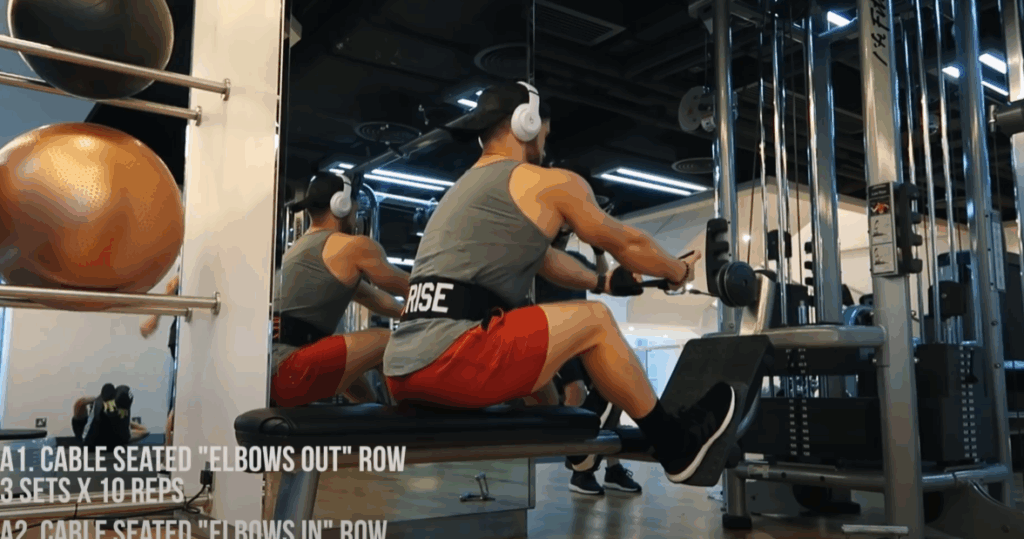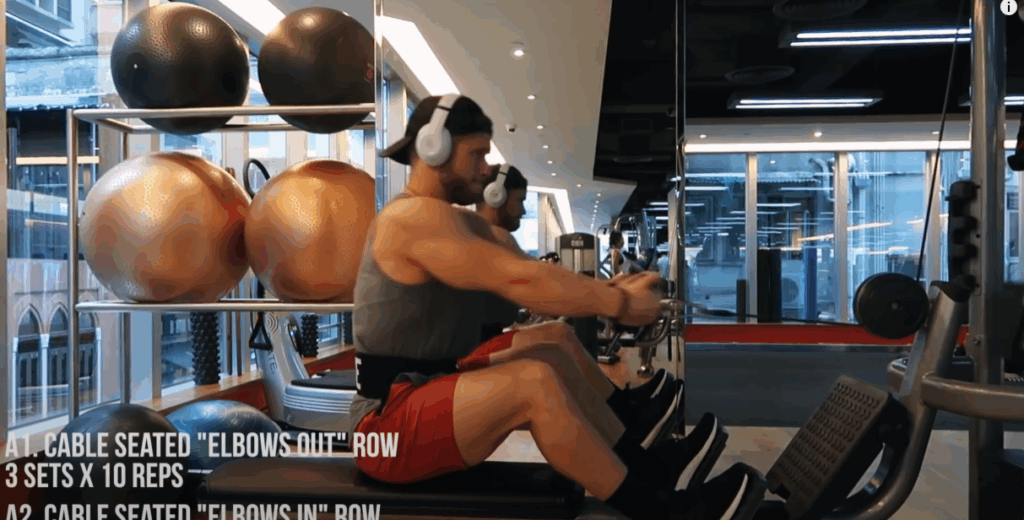Exploring new cities doesn’t mean your fitness goals have to take a back seat. During a recent trip to Hong Kong, I continued my hypertrophy-focused training program, adapting it to the equipment and environment available. In this article, I’ll walk you through a fully-optimized pull day workout I completed while traveling, designed to target the lats, traps, rear delts, and biceps. This session also included tweaks based on equipment variety and recovery needs while on the road.
Pull Day Breakdown: Travel Edition
Session Context: Week 5, Day 6 of a Push-Pull-Legs routine
While in Hong Kong, I trained at a well-equipped local gym and made a few adjustments to my usual program due to travel fatigue and lower back tightness. This was a lat-dominant pull workout with hypertrophy in mind.

1. Close-Grip Lat Pulldown (4 sets of 10–12 reps)
This movement kicked off the session, using MAG-style neutral grip handles that allowed for better wrist alignment and reduced forearm involvement. The goal was maximal lat activation, achieved by focusing on driving the elbows downward in a controlled motion. A slight lean-back (approximately 30 degrees) and a tall chest position ensured optimal shoulder extension throughout the rep.
Training Tip: Avoid pulling with your hands. Instead, visualize your elbows being pulled down and behind you to better engage the lats.
2. Seated Cable Row Superset: Mid-Back Focus to Lat Emphasis (3 rounds of 10+10 reps)
This superset introduced two distinct rowing cues within the same set:
- First 10 reps: Elbows flared out, emphasizing scapular retraction to hit mid traps and rhomboids.
- Next 10 reps (after a 5-second pause): Elbows tucked and pulled downward and back, shifting emphasis toward the lats.
This dynamic superset allowed for broader back development in one set and added a novel stimulus for travel-based training.
3. Cable Lat Row with Extended Range of Motion (3 sets of 10–15 reps)
Using long-handled cable attachments, I leaned slightly forward at the start of each rep to increase the stretch at the bottom. Finishing with a full extension at the top provided a longer time under tension and a more complete lat contraction.
Why This Works While Traveling: Cable stacks are adjustable and joint-friendly, making them ideal for lighter sessions when recovery is compromised.
4. Snatch-Grip Barbell Shrugs on Smith Machine (3 sets of 15–20 reps)
To protect my lower back during travel, I performed this trap-building movement with a staggered stance on the Smith machine. The snatch grip allows for greater trap engagement, while lighter loads and controlled reps reduced injury risk.
Tip: Hold the peak contraction for 1–2 seconds at the top of each shrug for added stimulus.
5. Cable Reverse Fly (Rear Delts, 3 sets of 12–15 reps)
Rear delts often get neglected, especially when traveling. Setting the pulleys high and leaning back helped isolate the delts by preventing upper trap dominance. The goal was to sweep the arms laterally, not backward.
Mind-Muscle Focus: Visualize your rear delts as the sole driver of the movement. If you feel it in your traps, recheck your form.

6. Bayesian Cable Curl + Hammer Curl Finisher (3 supersets)
- Bayesian Curls: Facing away from the cable station increases bicep stretch and engages the long head more effectively.
- Hammer Curls: Performed with dumbbells to overload the brachialis and forearms, finishing the arms with a functional pump.
Post-Workout Recovery: Nutrition While Abroad
After the workout, I returned to my Airbnb for a vegan protein shake (plant-based blends tend to digest better during travel). Given the lower protein density in local Hong Kong cuisine, supplemental protein was essential to meet daily intake goals. Kiwis, surprisingly abundant in local markets, added a refreshing vitamin C boost.
Bonus: Travel Highlights from Hong Kong
Training aside, this trip included exploring Kowloon’s iconic skyline, indulging in authentic egg waffles, and even trying unexpected high-protein local dishes—yes, even jellyfish! I also discovered one of the best massages I’ve ever had, which greatly helped ease my travel-induced lower back tension.

Final Thoughts
Staying on track with your training while traveling is possible with a little creativity and smart programming. Whether you’re facing equipment limitations or dealing with fatigue, structured workouts like this keep progress moving forward without compromising recovery. Use travel as a chance to break routine, introduce new stimuli, and still walk away with gains.
Want more travel-friendly training content? Drop a comment below and I’ll continue building this series for globetrotting lifters.



